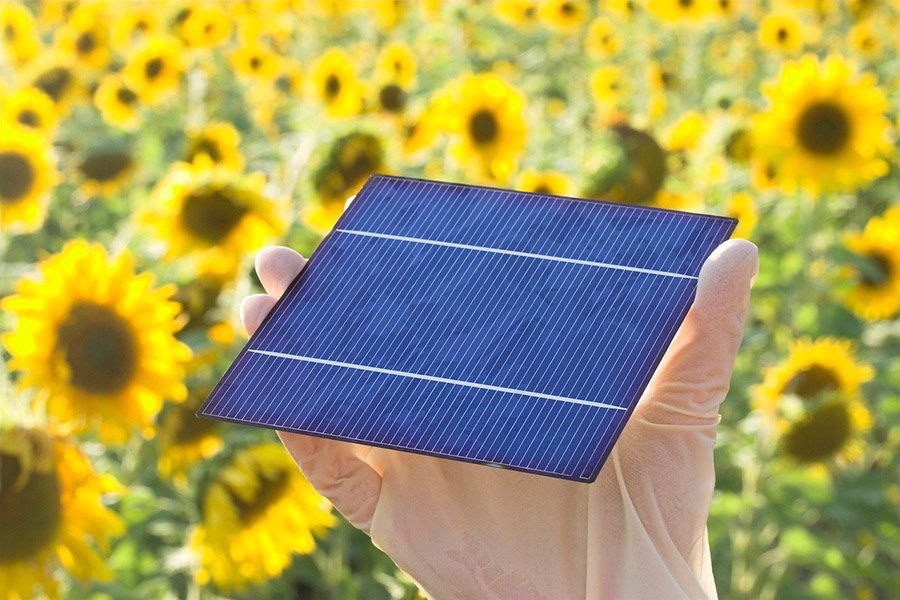Solar energy is one of the most promising sources of renewable energy, harnessing the power of the sun to produce electricity without the harmful emissions associated with fossil fuels. As the world shifts towards cleaner energy sources, solar power is playing an increasingly important role. Here are 50 fascinating facts about solar energy that highlight its potential, innovations, and impact on our world.
Facts #1-10: Fundamentals of Solar Energy
- Solar Energy is Abundant: The Earth receives enough sunlight in just one hour to meet the world’s energy needs for an entire year.
- Photovoltaic Cells: The first modern solar cell was developed in 1954 at Bell Laboratories, with an initial efficiency of only 6%.
- Two Main Types: Solar energy can be captured through photovoltaic (PV) cells, which convert sunlight directly into electricity, and solar thermal systems, which use sunlight to generate heat.
- Speed of Light: Solar energy travels 93 million miles from the sun to Earth in about 8 minutes and 19 seconds.
- Global Reach: Solar energy is the most widely available energy source, with the potential to generate power in nearly every region of the world.
- Photovoltaic vs. Solar Thermal: PV panels convert sunlight into electricity directly, while solar thermal systems use sunlight to heat fluids that produce steam to drive turbines.
- The Photovoltaic Effect: Discovered in 1839 by Edmond Becquerel, this effect is the basis of how solar cells generate electricity.
- Historic Milestone: The first solar-powered satellite, Vanguard 1, was launched by the US in 1958.
- Silent Power: Unlike fossil fuels, solar energy generates electricity without noise pollution, making it an environmentally friendly option.
- Rooftop Potential: In the US, over 800 GW of solar power could be harnessed from residential rooftops alone, showcasing the immense potential of solar energy.

Facts #11-20: Economic Impact and Cost Efficiency
- Declining Costs: The cost of solar panels has dropped by 80% since 2008, making solar energy more accessible to the general public.
- Tax Incentives: Many governments offer tax breaks and incentives to encourage the adoption of solar energy, making it more affordable for individuals and businesses.
- Return on Investment: In many US states, investing in solar panels has a better return on investment (ROI) than traditional stock market investments.
- Job Creation: The solar industry has created over 250,000 jobs in the US alone, with continued growth expected as the industry expands.
- Affordability: The cost of installing residential solar systems has decreased by over 70% since 2010, making it a viable option for many homeowners.
- Leasing Options: Homeowners can lease solar panels, allowing them to access solar energy without the upfront costs of purchasing a system.
- Energy Independence: Generating your own solar power reduces reliance on the grid and fossil fuels, providing greater energy security and independence.
- Community Solar Projects: These projects allow people without suitable roofs to invest in shared solar systems, making solar energy more accessible to a wider audience.
- Increased Property Value: Homes with solar panels typically sell for about 4.1% more than those without, highlighting the added value of solar energy.
- Utility Savings: Homeowners can save thousands on electricity bills over the lifetime of their solar panels, making solar energy a smart financial choice.

Facts #21-30: Environmental Benefits
- Zero Emissions: Solar energy produces no greenhouse gases or pollutants during operation, making it one of the cleanest energy sources available.
- Renewable Resource: Solar power is virtually limitless, unlike fossil fuels, which are finite and contribute to environmental degradation.
- Reduces Carbon Footprint: Switching to solar energy significantly reduces a household’s carbon footprint, contributing to global efforts to combat climate change.
- Supports Grid Stability: Solar energy, when paired with storage solutions, can help stabilize the power grid by providing backup power during peak demand periods.
- Water Conservation: Solar power plants use significantly less water compared to traditional power generation methods, making them a more sustainable option.
- Promotes Sustainable Agriculture: Solar-powered irrigation systems are transforming farming in remote areas, reducing reliance on diesel generators and improving crop yields.
- Reduces Air Pollution: Widespread adoption of solar energy can reduce harmful air pollutants from fossil fuel combustion, improving public health.
- Climate Change Mitigation: Solar energy is a key player in global efforts to reduce greenhouse gas emissions and mitigate climate change impacts.
- Biodiversity Preservation: Solar farms can coexist with natural habitats, reducing the environmental impact compared to other forms of energy production.
- Supports Energy Resilience: Solar power can provide backup energy during natural disasters and outages, increasing community resilience.

Facts 31-40: Technological Innovations
- Solar-Powered Vehicles: Innovations in solar technology are enabling the development of solar-powered electric vehicles, reducing reliance on traditional charging methods.
- Building-Integrated Photovoltaics (BIPV): Solar panels can now be integrated into building materials like roofs and windows, turning structures into energy-generating powerhouses.
- Space Solar Power: NASA is exploring the use of solar energy to power space missions, with solar panels being a critical component of satellites and space stations.
- Graphene-Coated Panels: These innovative solar panels can generate electricity even in rainy conditions, increasing the reliability of solar energy in less sunny climates.
- Smart Inverters: Modern inverters optimize solar panel performance and facilitate better grid integration, enhancing the efficiency of solar energy systems.
- Virtual Power Plants: Solar + storage setups can be managed like traditional power plants, offering a new way to provide reliable and distributed energy generation.
- Portable Solar Solutions: Lightweight, foldable solar panels are being developed for use in camping and emergency situations, expanding the versatility of solar energy.
- Concentrated Solar Power (CSP): CSP uses mirrors to focus sunlight and generate high temperatures for power production, offering an alternative to photovoltaic technology.
- Solar Paint: Researchers are developing paint that can generate electricity from sunlight, potentially turning any surface into a solar panel.
- Solar Desalination: Solar energy is being used to convert seawater into freshwater in arid regions, providing a sustainable solution to water scarcity.

Facts #41-50: Global Adoption and Future Prospects
- Leading Solar Nations: China, the United States, and Japan are the top three countries in terms of installed solar power capacity, leading the way in global solar energy adoption.
- Largest Solar Plant: The Noor Abu Dhabi plant in the United Arab Emirates is the largest solar power plant in the world, with a capacity of 1,177 megawatts.
- Solar Power in Developing Countries: Solar energy is helping to provide electricity to over 1 billion people globally who lack reliable access to power, improving quality of life and enabling economic development.
- Solar Jobs Worldwide: The solar industry employs millions of people worldwide, with significant job growth occurring in both developed and developing nations.
- 100% Solar-Powered Cities: Cities like Las Vegas, Nevada, and Burlington, Vermont, have achieved 100% renewable energy, largely through solar power.
- Solar Market Growth: Solar power accounted for 53% of all new electricity-generating capacity added to the U.S. grid in 2023, a sign of its rapidly growing market share.
- Long-Term Sustainability: The International Energy Agency (IEA) projects that solar energy will become the world’s largest source of electricity by 2050, driven by ongoing technological advancements and policy support.
- Solar in Space Exploration: Solar panels are essential for powering spacecraft and the International Space Station, demonstrating their reliability in extreme conditions.
- Public Support: A significant majority of people worldwide support the expansion of solar energy, recognizing its environmental and economic benefits.
- Solar’s Bright Future: With continuous improvements in efficiency, affordability, and storage solutions, the future of solar energy looks increasingly promising, paving the way for a cleaner, more sustainable energy future.
Final Thoughts
Solar energy stands out as a vital solution in the global effort to transition away from fossil fuels. From its abundant availability and decreasing costs to its role in job creation and environmental sustainability, solar power is more than just an energy source—it’s a key to a sustainable future. As technological innovations continue and global adoption expands, solar energy’s potential will only grow, making it an essential part of our world’s energy landscape.





